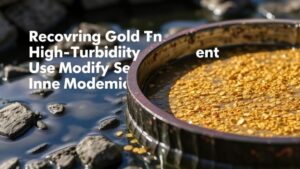Agricola’s Techniques for Pre-Treating Refractory Ores in Smelting
Agricola’s Techniques for Pre-Treating Refractory Ores in Smelting
In the intricate field of metallurgy, pre-treating refractory ores is essential for enhancing the efficiency of smelting processes and improving metal recovery rates. The term refractory ores refers to ores that cannot be easily processed through conventional smelting methods due to their complex mineralogical structures. Georgius Agricola, a seminal figure in the study of mining and metallurgy during the Renaissance period, contributed significantly to understanding the methods required for treating these challenging ores. This article explores Agricolas techniques, providing insights into their relevance and application in modern practices.
The Nature of Refractory Ores
Refractory ores are characterized by their high resistance to heat and chemical reactions necessary for extraction processes. Common examples include sulfide ores of metals such as gold, copper, and silver, which present challenges due to their complex mineral forms. According to the International Journal of Mineral Processing, refractory ores account for approximately 30% of the global mineral resource base, which underlines the importance of developing effective pre-treatment methods.
Agricola’s Observations and Techniques
Agricolas insights laid the foundation for several techniques that would advance the handling of refractory ores. His works, primarily De Re Metallica, detail methods that include roasting, grinding, and the use of fluxes. These techniques are essential for breaking down the mineral matrices that impede metal extraction.
- Roasting: Agricola recognized the importance of roasting refractory ores as a precursor to smelting. This process involves heating the ore in the presence of oxygen to oxidize sulfur and other impurities, making the valuable metals more accessible. For example, roasting sulfide ores converts them into oxides, facilitating easier extraction.
- Grinding: Agricola emphasized the role of size reduction in mineral processing. By grinding ores into finer particles, the surface area exposed to chemical reactions increases, enhancing the efficiency of the subsequent smelting processes. For example, the grinding of gold-bearing refractory ores is vital for maxing recovery rates.
- Use of Fluxes: Fluxes are materials added during smelting to promote the fusion of ores. Agricola noted that adding fluxes such as limestone or silica can help lower the melting point of the ore, thus enabling better recovery of precious metals. This technique is still relevant; in modern smelting, varying the flux composition is a critical factor in optimizing recovery rates.
Real-World Applications of Agricola’s Techniques
Agricolas techniques have been validated and enhanced through modern metallurgy. One notable example is the treatment of refractory gold ores, which has evolved but remains rooted in Agricola’s principles. Modern processes such as pressure oxidation and bioleaching incorporate roasting principles to improve gold recovery. A case study in the Journal of Mining Science demonstrated that a hybrid approach using pressure oxidation after initial roasting improved the recovery of gold to an astounding 95% from traditionally difficult ores.
Challenges and Considerations
Despite the historical significance of Agricola’s methods, numerous challenges persist in pre-treating refractory ores. Environmental concerns regarding gas emissions during roasting present a significant barrier in modern operations. Also, the complexity of hybrid methods increases operational costs and necessitates rigorous process control.
Also, the selection of appropriate fluxes requires in-depth knowledge of the specific ore composition to avoid adverse reactions that could decrease efficiency. Ongoing research in metallurgical sciences aims to develop more environmentally friendly and cost-effective techniques that can address these challenges while maximizing metal recovery.
Conclusion: Actionable Takeaways
Agricola’s techniques for pre-treating refractory ores provide valuable insights into historical practices that remain relevant today. Key strategies include:
- Employ roasting to oxidize and release valuable metals from refractory ores.
- Use grinding to enhance surface area for better chemical reaction access.
- Incorporate the use of appropriate fluxes to aid the smelting process.
By blending Agricola’s foundational techniques with modern advancements, metallurgists can improve recovery rates, reduce costs, and explore new strategies for processing refractory ores efficiently. As challenges in metallurgy continue to evolve, returning to historical concepts can inspire innovative solutions for today’s mining industry.



